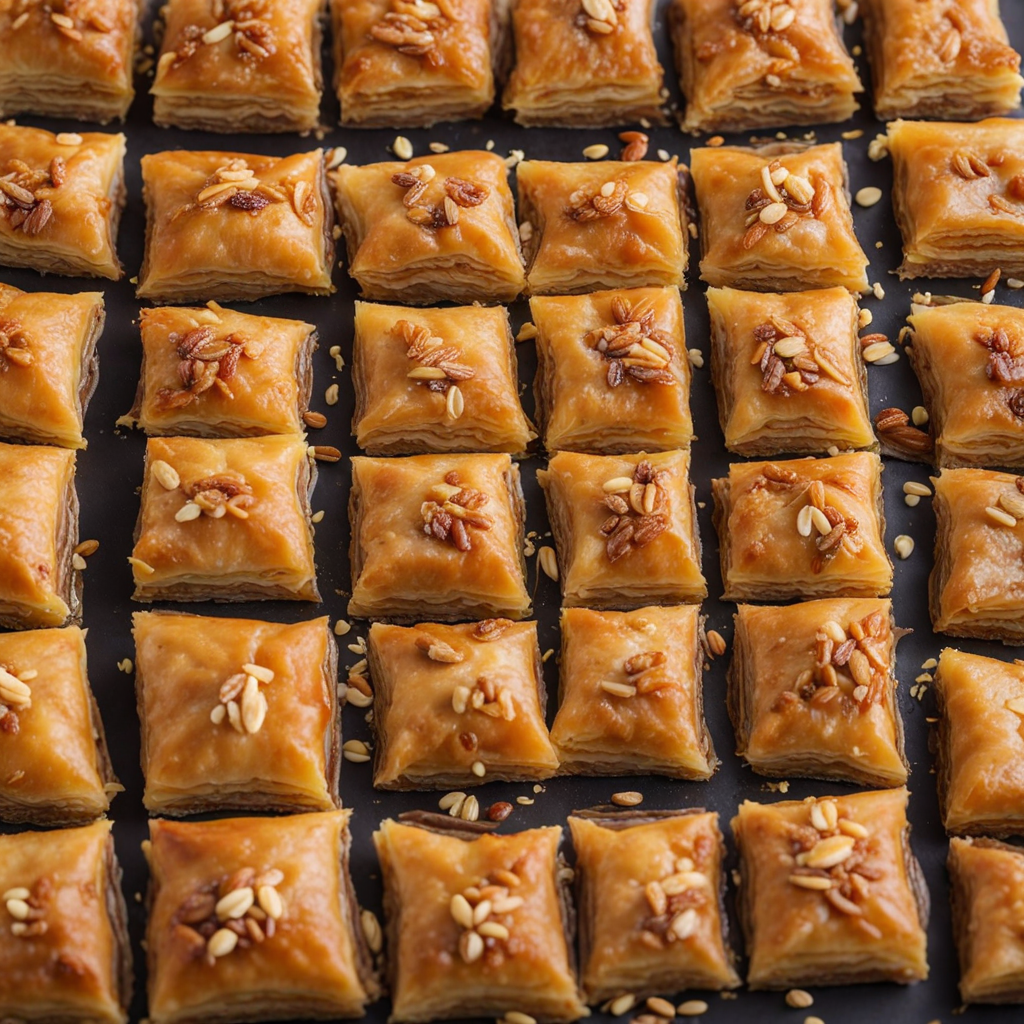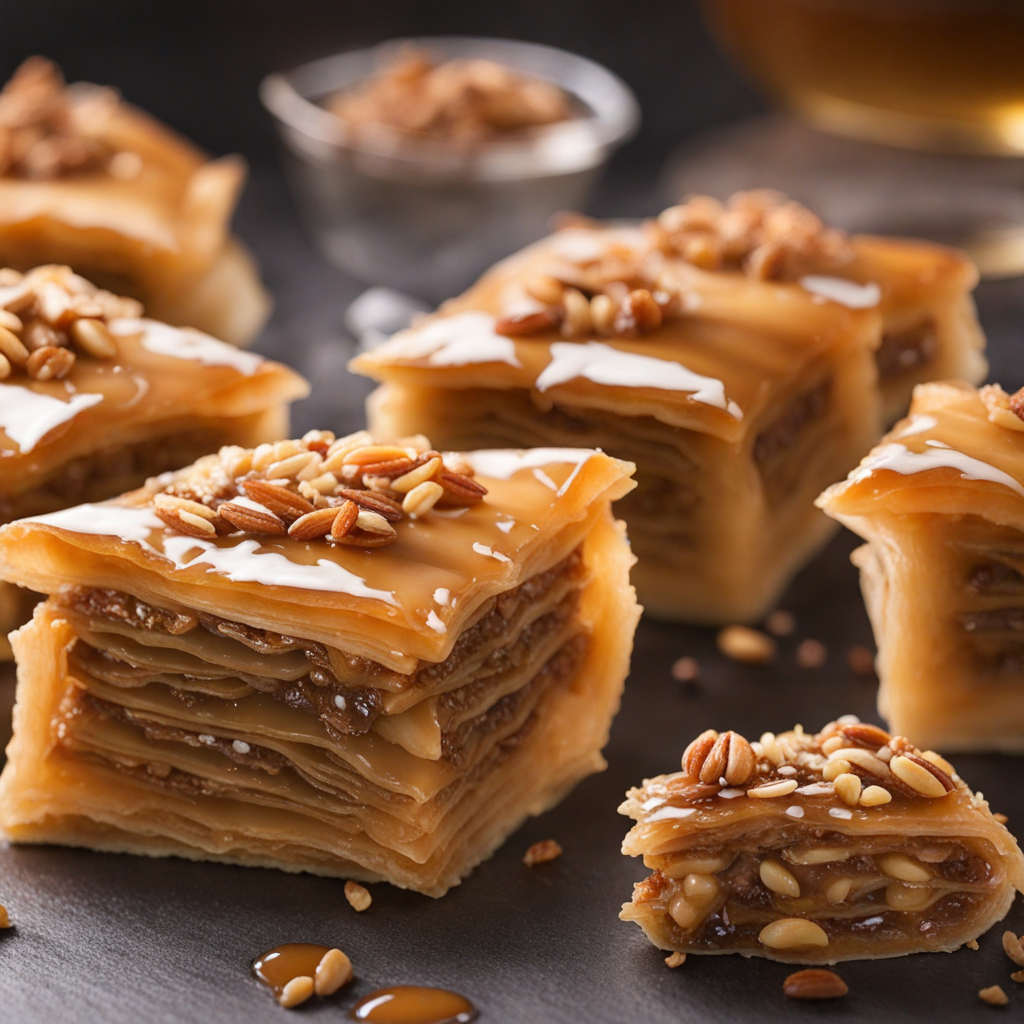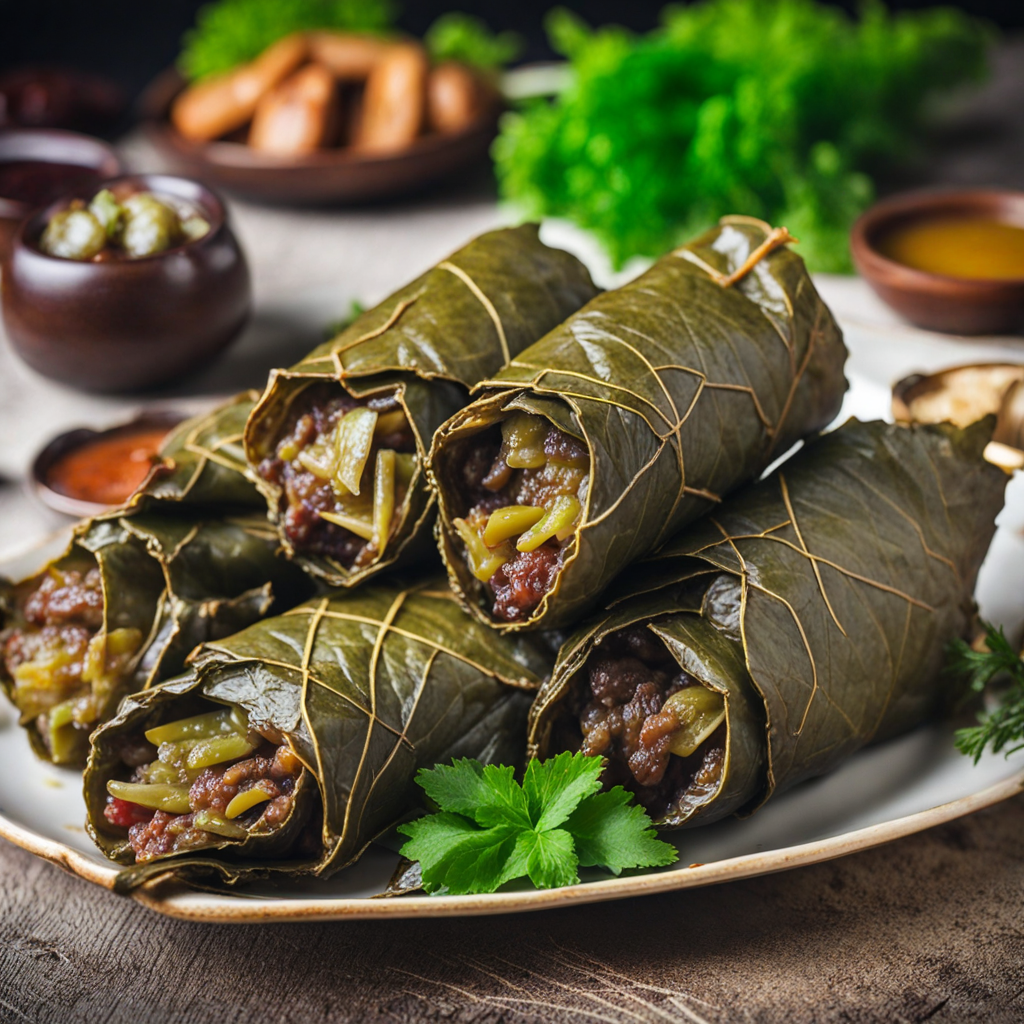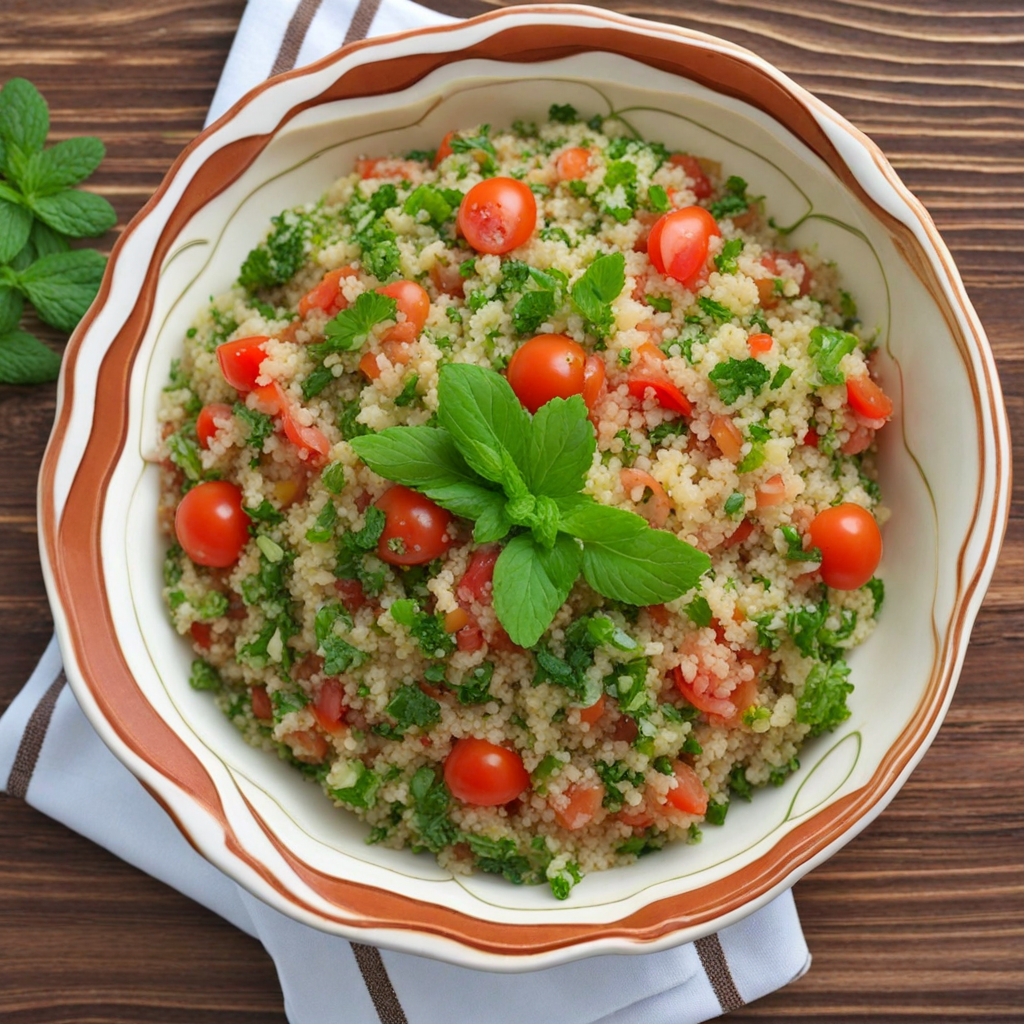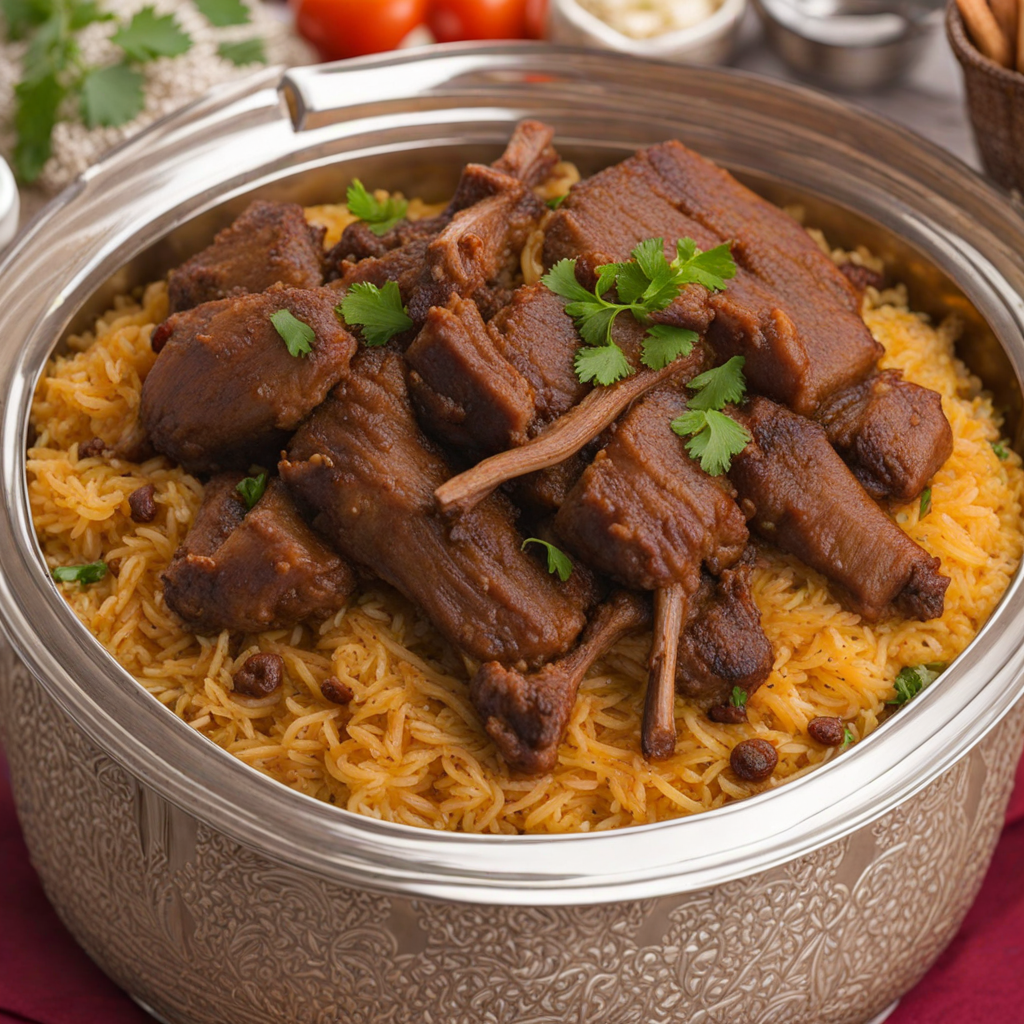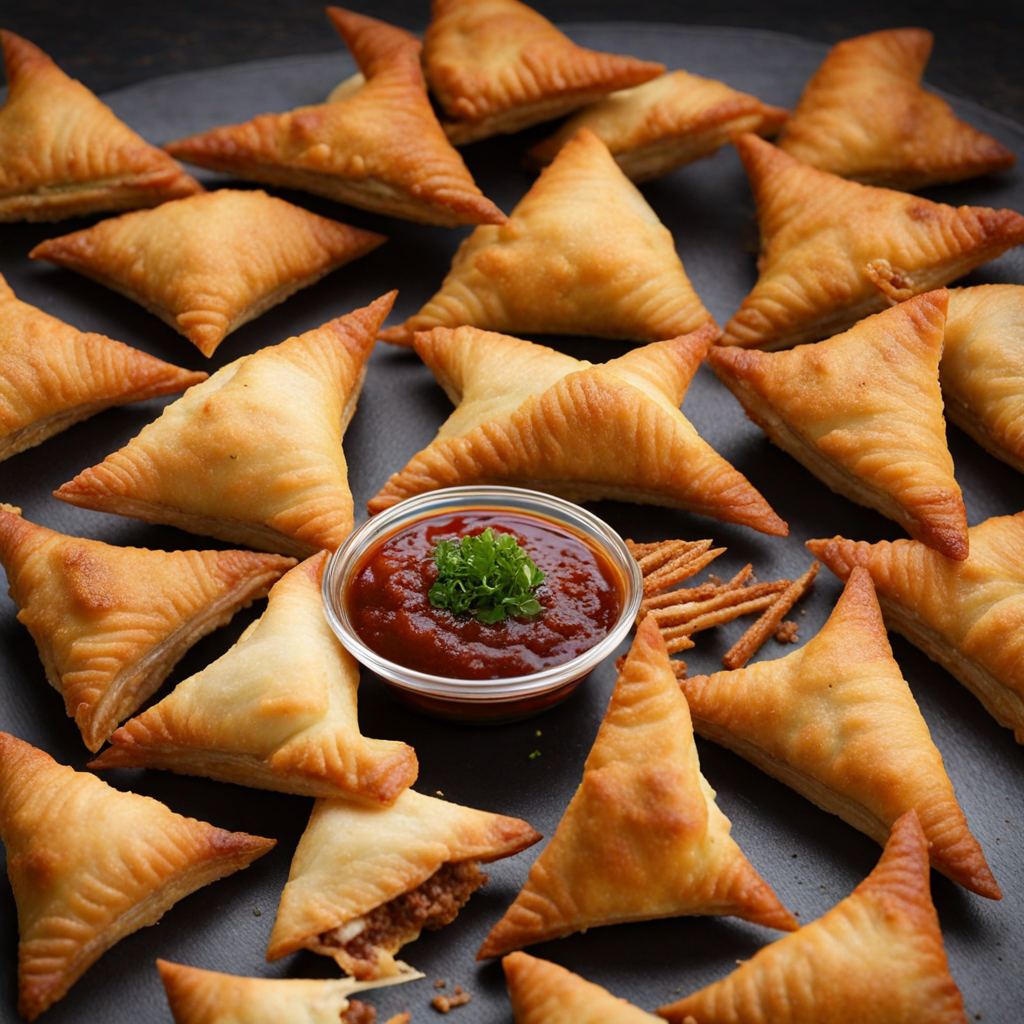Baklava
Baklava is a delectable pastry that embodies the rich culinary heritage of Qatar, combining layers of flaky phyllo dough with luscious fillings and sweet syrups. Each piece is meticulously crafted, with sheets of phyllo brushed with melted butter and stacked to create a light, crisp texture. Traditionally, the filling consists of finely chopped nuts, such as pistachios or walnuts, which are sweetened with a hint of sugar and often spiced with cinnamon. This delightful combination results in a symphony of textures and flavors, where the crunch of the pastry contrasts beautifully with the nutty richness within. The sweetness of Baklava is elevated by a generous drizzle of syrup, made from sugar, water, and a splash of rose water or orange blossom water. This syrup seeps into the layers, adding a moist, sticky finish that enhances the overall taste experience. The aromatic essence of the floral ingredients complements the nutty filling, creating a harmonious balance that is both indulgent and refreshing. Each bite offers a delightful burst of flavor, making it impossible to resist reaching for just one more piece. Served in small squares or diamond shapes, Baklava is often enjoyed as a luxurious dessert during special occasions and gatherings in Qatar. It is commonly paired with Arabic coffee or tea, which provides a perfect counterpoint to the sweetness of the pastry. Whether enjoyed at a festive celebration or as a simple afternoon treat, Baklava is a culinary treasure that invites you to savor the rich flavors and traditions of Qatari cuisine.
How It Became This Dish
The Enigmatic Journey of Baklava: A Sweet Legacy of Qatar Baklava, known as 'بقلاوة' in Arabic, is a dessert that has transcended borders, cultures, and centuries. This multi-layered pastry, filled with chopped nuts and sweetened with syrup or honey, has become emblematic of Middle Eastern cuisine, including the vibrant culinary tradition of Qatar. While its precise origins are shrouded in mystery, the story of baklava is a tapestry woven from the threads of various civilizations, each contributing to its evolution into the beloved delicacy we know today. #### Origins and Historical Context The origins of baklava are a subject of debate among food historians. Some trace its roots back to ancient Assyria, where layers of dough were used to create a similar dessert. The Assyrians are believed to have used thin layers of dough called 'yufka', which were filled with nuts and sweetened with honey. However, it wasn't until the Byzantine Empire that baklava began to take a shape akin to what we recognize today. The Greeks and Romans adapted the original recipes, incorporating local ingredients and techniques. As the Ottoman Empire expanded across the Middle East, North Africa, and parts of Europe, baklava took on new forms and flavors, absorbing the culinary influences of each region. It became a staple in royal kitchens, where it was often served to guests and during celebrations. The Ottomans elevated baklava to an art form, using an intricate layering technique that showcased the skill of the pastry chefs, known as 'usta'. The dessert became a symbol of wealth and hospitality, often presented during festivals and significant events. #### Cultural Significance in Qatar In Qatar, baklava is more than just a dessert; it embodies the spirit of hospitality and tradition. The Qatari culture places great emphasis on welcoming guests, and serving baklava is a gesture of warmth and generosity. It is common to find baklava served during special occasions such as weddings, Eid celebrations, and family gatherings. This rich confection is often accompanied by Arabic coffee or tea, creating a delightful pairing that enhances its flavors. Baklava also plays a role in Qatari identity, reflecting the country’s history of trade and interaction with various cultures. The dessert has been embraced and adapted, with local variations that incorporate regional ingredients such as dates or local nuts. This fusion of flavors highlights Qatar’s diverse culinary landscape, shaped by centuries of trade routes and cultural exchanges. #### The Evolution of Baklava in Qatar The development of baklava in Qatar has mirrored the broader changes in Qatari society, particularly in the last century. Traditionally, baklava was prepared in homes, passed down through generations. Recipes varied from family to family, with each adding its unique touch. The use of local ingredients, such as pistachios, walnuts, and almonds, was common, and many families cherished their secret recipes, which were closely guarded and handed down as heirlooms. With the rapid modernization of Qatar in the late 20th and early 21st centuries, the culinary scene began to diversify. The introduction of international cuisines brought new influences, yet baklava remained a staple dessert. Bakeries and confectioneries began to emerge, offering a variety of baklava styles, from the traditional to innovative twists. For instance, some establishments started experimenting with flavors like chocolate or adding exotic spices, while others maintained a strong focus on authenticity. The rise of tourism in Qatar has also contributed to the popularity of baklava. As more visitors from around the world flock to the country, they seek out authentic Qatari experiences, and baklava often features prominently in culinary tours. Tourists are enchanted by the delicate layers and rich flavors, and many find themselves captivated by the story behind this iconic dessert. #### The Art of Making Baklava The making of baklava is an art that requires patience, skill, and precision. The process begins with the preparation of the dough, which is rolled out into paper-thin sheets. This layering is crucial, as it creates the pastry's delicate texture. Traditional baklava uses a combination of butter and oil to achieve the perfect balance of flavor and flakiness. Once the layers are assembled, the filling—typically a blend of finely chopped nuts and sugar—is added before the entire confection is baked to a golden brown. After baking, the baklava is drenched in a sweet syrup made from sugar, water, and a hint of lemon or rosewater. This syrup seeps into the layers, creating a harmonious blend of sweetness that complements the nuttiness of the filling. The baklava is then cut into diamond or square shapes, ready to be served. #### A Modern Revival In recent years, there has been a renewed interest in traditional Qatari cuisine, and baklava has benefitted from this culinary renaissance. Chefs and home cooks alike are experimenting with new presentations and flavor combinations while honoring traditional methods. Food festivals, pop-up markets, and culinary workshops have embraced baklava, showcasing its versatility and timeless appeal. Social media platforms have played a significant role in this revival, as food enthusiasts share images of beautifully crafted baklava, inspiring others to try their hand at making it or to seek out the best baklava in town. This digital age has allowed baklava to transcend its geographical boundaries, introducing it to a global audience and sparking interest in Qatari culinary heritage. #### Conclusion Baklava, or بقلاوة, is a testament to the rich tapestry of history, culture, and tradition that defines Qatar. From its ancient origins to its modern adaptations, this exquisite dessert reflects the intermingling of flavors and influences that have shaped the region. As Qatar continues to evolve and modernize, baklava remains a cherished symbol of hospitality, heritage, and the sweet moments shared among family and friends. Whether enjoyed at a festive gathering or as a treat during a quiet afternoon, baklava is more than just a dessert; it is a celebration of life’s sweetness, deeply rooted in Qatari culture and history.
You may like
Discover local flavors from Qatar


